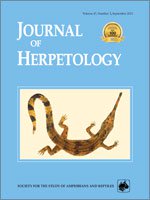Northern Watersnakes, Nerodia sipedon, have been introduced into California's Central Valley and pose an important new challenge for the management of biodiversity in the state's already greatly distressed freshwater ecosystems. Nonnative watersnakes will likely compete with federally threatened Giant Gartersnakes, Thamnophis gigas, and prey on native amphibians and fish, including young salmonids, many of which are imperiled. We used three types of aquatic funnel traps and three different methods to estimate the abundance and density of N. sipedon in a small wetland in Roseville, California. Capture rates did not differ significantly among the three trap types but snakes captured in large box funnel traps were nearly 300 mm longer on average than those captured in minnow traps. Our estimates of the abundance of N. sipedon in our 2-ha trapping area were similar for the mark–recapture model, Leslie depletion curve, and the actual number of snakes removed over 57 days (112.4–119 individuals; approximately 56.2 snakes/ha). Extrapolating to the entire 6.2-ha aquatic area, the population likely numbered approximately 348 individuals. Several females were gravid, demonstrating successful reproduction by this species outside its native range. We caught more small N. sipedon compared with studies in its native range. This may be due to a sampling bias in our trapping methods but more likely reflects a population growing rapidly from a few initial founders with relatively fewer large adults. We recommend immediate action to prevent the spread and broader establishment of N. sipedon across the Central Valley of California.
How to translate text using browser tools
1 September 2013
Trapping Efficiency, Demography, and Density of an Introduced Population of Northern Watersnakes, Nerodia sipedon, in California
Jonathan P. Rose,
Oliver J. Miano,
Brian D. Todd
ACCESS THE FULL ARTICLE

Journal of Herpetology
Vol. 47 • No. 3
September 2013
Vol. 47 • No. 3
September 2013




